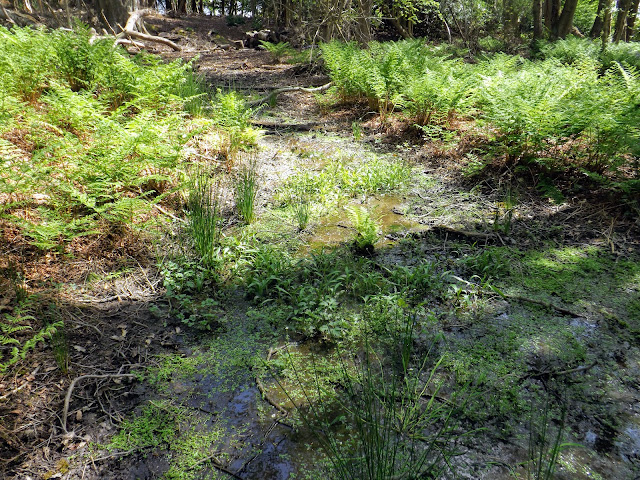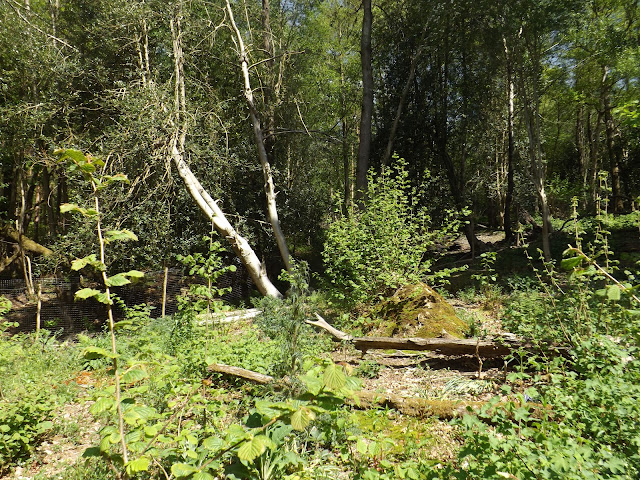I started writing this in the middle of a short July heatwave. Luckily it's fairly easy to keep cool in the wood. We spent a weekend at the cabin which was gorgeous but still chilly enough at night to get the blankets out. We caught up with the bats we hadn't seen for a while and sat by the Pond at dusk watching them swoop and flutter out of the trees and skim across the water, almost brushing against my head, which felt a bit too close for comfort.
This silver washed fritillary took a fancy to a colour matched Sainsbury's bag on the sunny cabin deck. They live in oak or mixed woodland and feed on nectar from thistles and brambles. Well we've got plenty of those.
Here's a few 2022 Spring Bluebell Glade pictures, The bluebells get better each year, spreading like wildfire throughout the wood. Oh, better not use the W word. So far this year, despite the dryness no wildfires have started (especially by the irresponsible person who managed to start one a couple of years ago by lighting a fire directly on tinder dry ground).

 |
Our restored hazel coppice has been surprisingly successful, with the young hazels managing to outpace the now abundant ground cover plants, even the 7ft tall foxgloves. Pleased with its success, we extended it further earlier this month and protected the new area with temporary deer netting. It's made a real difference to a part of Old Copse that borders the road.

The Willow Grove is doing well and looks lush and beautiful. We hope the Purple Emperor butterflies and marsh tits have been enjoying it. We planted lots of willow cuttings after the pollarding last winter. Most of them have taken, but the deer have chomped a few. Time to put a protective tube over them.We plan to gradually extend the willow grove area to join up with the wet wood. Natural England suggest that instead of pollarding (cut above deer munching height), we could coppice (cut them to the ground) We don't know what the benefits of doing this would be, and of course, deer would be in like a shot to eat the regrowth so we would have to protect it with deer fencing. We will probably stick to pollarding.

Another suggestion by both Natural England and Sussex Wildlife was to clear a large section of birch monoculture and replant for diversity. Gulp! more bracken and bramble to look forward to if we do this, so we're planning a more cautious approach with some more gradual 'halo' thinning (felling only around existing non - birch, broadleaf trees) . At the Southern part of Old Copse there is birch and Scots pine and hardly anything else ( except the Wet Wood, Hazel Coppice , and Willow Grove, but there is a lot more tree diversity among the birch at the Northern end of Old Copse. Why this should be, we don't know.
A suggestion by Sussex Wildlife Trust we viewed with more enthusiasm than for tree thinning, was to extend the 'wet wood' area by using damming techniques to slow the draining of rain and natural Spring water into the Pond. This would create a larger wet area, and be excellent for wildlife. This sounds interesting and we hope to carry out this improvement at some point during Autumn/Winter, 2022/23


A veteran beech - one of our two largest trees - lost its top in Storm Arwen earlier in the year, but. it's still alive and the extra light will doubtless bring more growth to the woodland floor.
The cabin looks as if it's becoming buried in heather, willow, rowan and regenerating birch which have sprung up between the pines.
....and........ rest, though sadly there's never a lot of time to lie in the shade of a beautiful oak when there's work to be done.













































